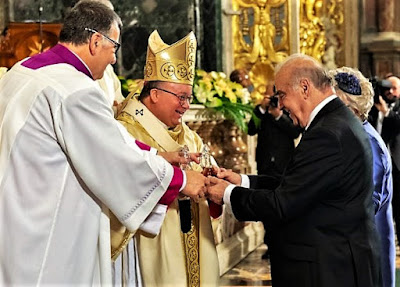 |
| Pope St Pius V (1504-1572) |
Pope Pius V also published the catechism of Trent and improved the breviary and the Roman Missal, which was still being used until 1962. He tried to clean Rome from any immorality, forbidding bullfights and even tried to stop bull fighting from Spain, one of the few things he was unsuccessful in. He died on May 1, 1572 and was canonized by Pope Clement XI in 1712.
Since he was a Dominican, he frequently kept using the white cassock or habit that Dominicans used, and the custom remained that successive Popes kept using white, possibly to beat the summer Roman heat. And that is why the Popes still use white as the color of their cassock. And the first thing Pope Francis did when he was elected Pope was the visit Santa Maria Maggiore and pay tribute to the tomb of Pope St Pius V. Our country of Malta is indebted to Pope Pius V as he gave donations for the capital city Valletta to be built, and also kept the Knights of Malta here, who defended us against the Muslims and the Ottoman Empire. Thus the Catholic church survived, otherwise, one never knows, we could have become Muslims. Malta is forever grateful to Pope St. Pius V.
















































